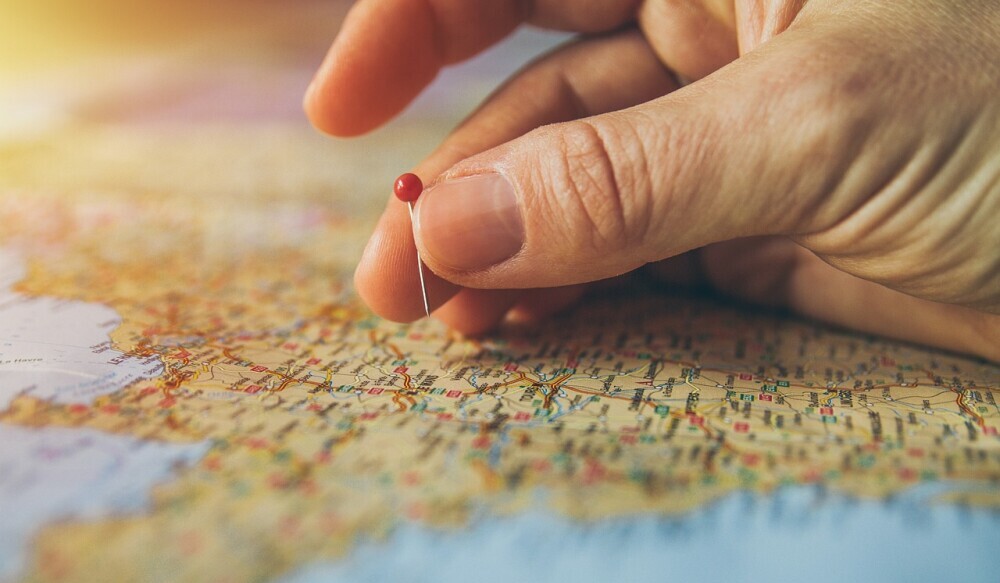
Overtourism isn’t just a buzzword; it’s a real issue affecting the lives of people across the globe. The term itself describes the impact when too many visitors crowd into destinations, leading to pressure on local resources, infrastructure, and daily life. This isn’t something that popped up overnight. It has a history rooted in an ever-growing global economy, high-speed travel, and the power of social media turning remote locales into viral hotspots.
There are several factors at play here. On one hand, you’ve got the economic drivers. Everyone loves a good deal, and cheap flights and accommodations have made globetrotting more accessible than ever. But what happens when everyone makes the same travel choice at the same time? It creates situations where the sheer number of tourists can overwhelm destinations during peak seasons, wreaking havoc on local resources and amenities.
Socially, the very communities that support these booming tourist spots often feel the sting. Traffic jams, crowded streets, and inflated prices—living in a ‘top destination’ can become a daily hassle. It’s like hosting a party that never ends, and sometimes the guests don’t clean up after themselves. Who bears the consequences? The locals do.
Environmentally, overtourism doesn’t play nice. Popular spots like beaches, national parks, and historical sites endure the footprints of thousands upon thousands of visitors, leading to wear and tear that’s tough to reverse. Natural ecosystems can’t bounce back on their own, and without careful management, the beauty drawing people to these spots could fade or disappear altogether.
It’s crucial to recognize who these issues are affecting. Local communities are both the backbone and the casualties of overtourism. They’re the ones maintaining the infrastructure and cultural heritage while facing daily challenges due to overcrowding. Understanding this aspect is the first step toward addressing the problem in a balanced way.
Economic Impact: A Double-Edged Sword
Tourism can be a big booster for local economies. It brings in money, creates jobs, and supports businesses, from fancy resorts to local shops selling hand-crafted goods. But this influx isn’t all sunshine and rainbows. If not managed right, the cost of maintaining infrastructure for all those visitors can skyrocket. Roads, public transport, and waste management systems get strained beyond their limits.
Inflation is another hiccup. As destinations become more popular, prices for everyday goods and services can surge. While this might look like growth on paper, it often leaves local residents paying more for their day-to-day lives. Suddenly, what used to be an affordable place to live and work is competing with international prices.
Then there’s the depletion of resources. Water shortages and energy demands rise as tourists flock in. It’s kind of like throwing a party and realizing you’ve run out of snacks and drinks halfway through. Balancing these environmental needs with a thriving tourism industry is tough but necessary to keep everyone happy and healthy.
To illustrate this, let’s look at [Popular Destination]. This spot saw an economic boom thanks to tourism, but not without its own set of challenges. Rapid development brought wealth but also left some communities scrambling to keep up with infrastructure demands. It’s a balancing act to maintain the financial benefits without losing the very essence that made it a hotspot in the first place.
Navigating this sector isn’t about choosing whether the financial benefits are worth the hassle. It’s more about finding sustainable methods that both drive the economy and protect local lives and resources. And that’s where we, as travelers and caretakers, can contribute by making conscious choices about where we go and how we spend.
Environmental Concerns: Deterioration of Nature

When tourists swarm pristine landscapes, the environment often takes the hit. Stunning beaches, lush forests, mountain trails—these natural wonders face wear and tear from foot traffic and pollution. It’s tough on the earth and all the wildlife that depends on these habitats to survive.
Take a simple hike, for instance. Multiply one person by thousands, and those trails start eroding much faster than nature can repair. Plants get trampled, wildlife gets disturbed, and sacred spots sometimes lose their untouched appeal. Environmental stressors sneak in and settle, leaving a lasting impact that’s hard to scrub out.
Resource use is another tricky topic. Freshwater supplies, waste management, and energy consumption skyrocket in visitor-heavy zones. Mother Nature ends up footing the bill, and she’s running a tab that’s hard to clear. When tourists hit a place hard, it can drastically impact these essentials, leading to shortages that stress local communities.
Carbon footprints also balloon. From flights to car rentals, the transportation linked to tourism packs an environmental punch. Constant travel buzz adds heaps more CO2 to the atmosphere, further mucking up climate change efforts. It’s essential to find cleaner, more efficient ways of moving people without messing up the planet.
In facing all this, there are ways to lend a hand. Travelers can opt for eco-friendly accommodations, use public transport, or even explore destinations that focus on sustainability. These choices do add up, helping ease the burden on local ecosystems. Big wins start with small steps, transforming travel into an ally rather than an adversary of nature.
Cultural Heritage At Risk: The Cost of Popularity
Culture is a big draw when it comes to tourism. Museums, historical sites, and festivals can pull in crowds that sometimes overwhelm the very essence they came to experience. The cultural identity, rich traditions, and local customs are often the first to feel the strain when tourist numbers swell.
When a place becomes too popular, its authentic vibe can start to fade. Traditional ways of life get skewed for tourist appeal, turning genuine cultural expressions into cookie-cutter experiences. This isn’t just about the loss of cultural heritage—it’s about losing a part of the identity of those communities.
Social displacement is another hurdle. As places cater more to tourists, locals might find themselves pushed out, unable to afford their own neighborhoods or feeling like outsiders in their own home. It’s a delicate balance between welcoming newcomers and preserving the local community’s space and culture.
Cultural sites can either thrive or deteriorate with tourism. While the influx of visitors might mean more money for preservation efforts, it can also lead to wear and tear, both physical and cultural. The question is how do we manage this? Engaging local communities in tourism management ensures that cultural integrity isn’t sacrificed just for the sake of catering to visitors.
Travelers have a role to play too. It’s about respecting local customs, supporting authentic local businesses, and appreciating cultures beyond just the tourist spectacles. There’s great value in learning about a place and the people who live there—not just snapping a quick photo before moving on to the next spot.
Proposed Solutions: Finding a Balance

Sustainable tourism can pave the way to managing overtourism smartly. This involves practices that protect local environments, respect cultures, and ensure economic fairness. It’s like a travel challenge where everyone wins, and destinations stay shiny and appreciated.
Technology’s stepping up as a solid sidekick in this mission. From digital tickets limiting crowd size at attractions to apps that suggest lesser-known local gems, tech can spread out the tourist load. Data-driven decisions can offer insights for smarter, more sustainable tourism strategies.
Governments play a pivotal role too. Policies focused on limiting visitor numbers during peak times or investing in local infrastructure for better resource management can make a world of difference. Regulation needs to be consistent and focused on the long game, not just short-term gains.
Local communities can lead the charge with community-driven tourism initiatives. These programs put the local folks in command, letting them highlight what’s special about their home. Travelers get genuine experiences, and locals benefit directly from tourism, keeping the cultural and social ecosystem thriving.
For travelers, adopting responsible travel habits helps. That means things like choosing eco-friendly accommodations, respecting local customs, and considering off-peak travel times. Personal decisions accumulate, leading to a collective impact that supports sustainability.
Moving Forward: Are Restrictions the Answer?
As we’re trying to figure out overtourism, putting restrictions in place can seem like an easy solution. Capping visitor numbers, enforcing permits—these are actions some destinations are already taking. While they might provide some relief, they can feel a bit like slapping a Band-Aid on a much larger wound. Clearly, more thoughtful solutions are needed.
What about thinking outside the box? Promoting off-season visits or encouraging tourists to explore less-known areas can help spread people out and ease pressure on crowded spots. This makes an adventure more exciting and less predictable, opening up fresh places to appreciate and support.
Empowering tourists through education is crucial as well. When travelers understand the impact of their choices on local environments and communities, they can act more responsibly. Everything from picking eco-friendly tours to engaging in cultural activities that respect traditions can make a difference. Armed with knowledge, tourists can become part of the solution.
Imagining a future where tourism and sustainability work hand in hand involves everyone—governments, locals, and visitors. It requires a shift in mindset where the well-being of destinations takes priority over quick profits. By embracing sustainability, everyone gets to enjoy what makes each place unique without compromising its future.
Moving forward, it’s not just about restricting numbers but nurturing an environment where travelers and locals can coexist positively. This approach supports long-term tourism that respects and preserves the wonders of the world for generations to come. An inclusive approach that invites everyone to contribute toward sustainable practices is key, because at the end of the day, saving the places we love is what it’s all about.
